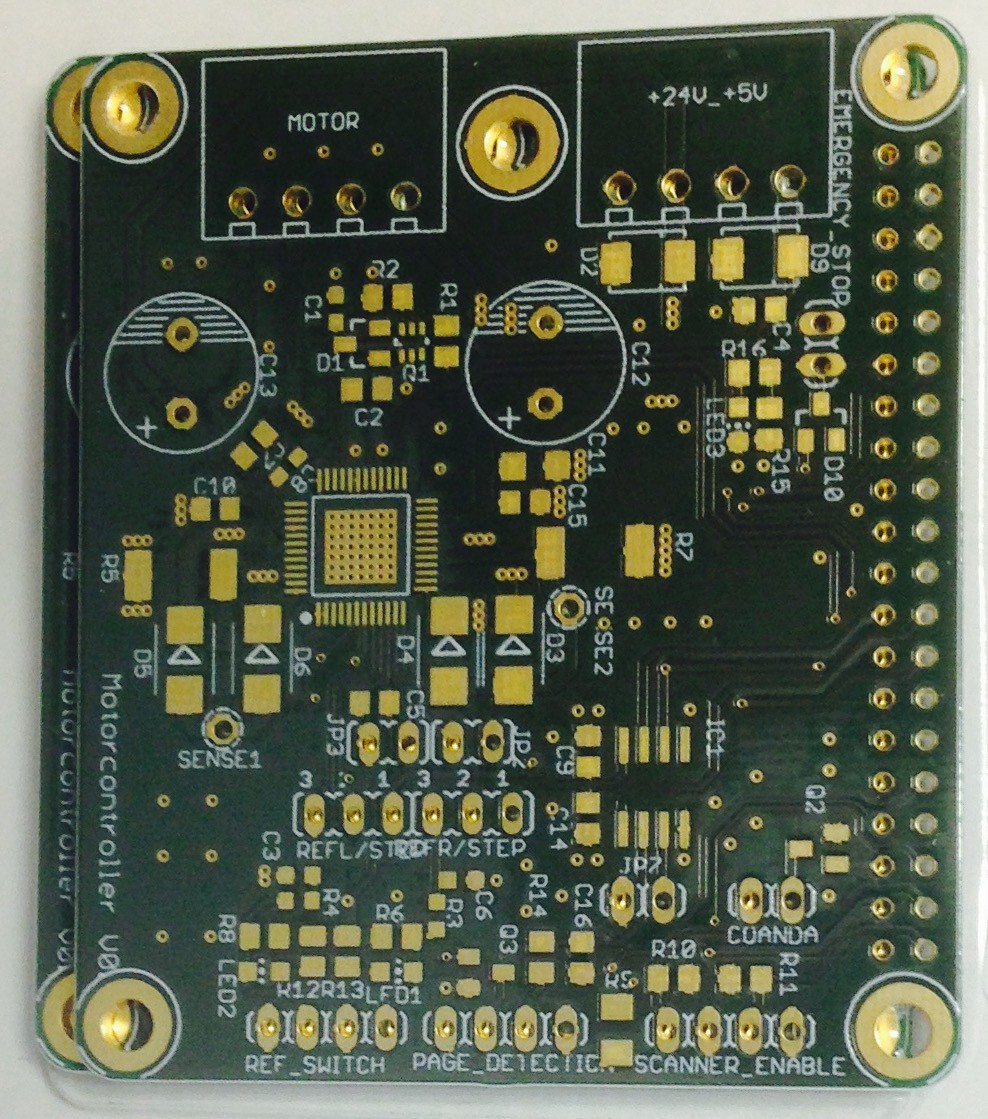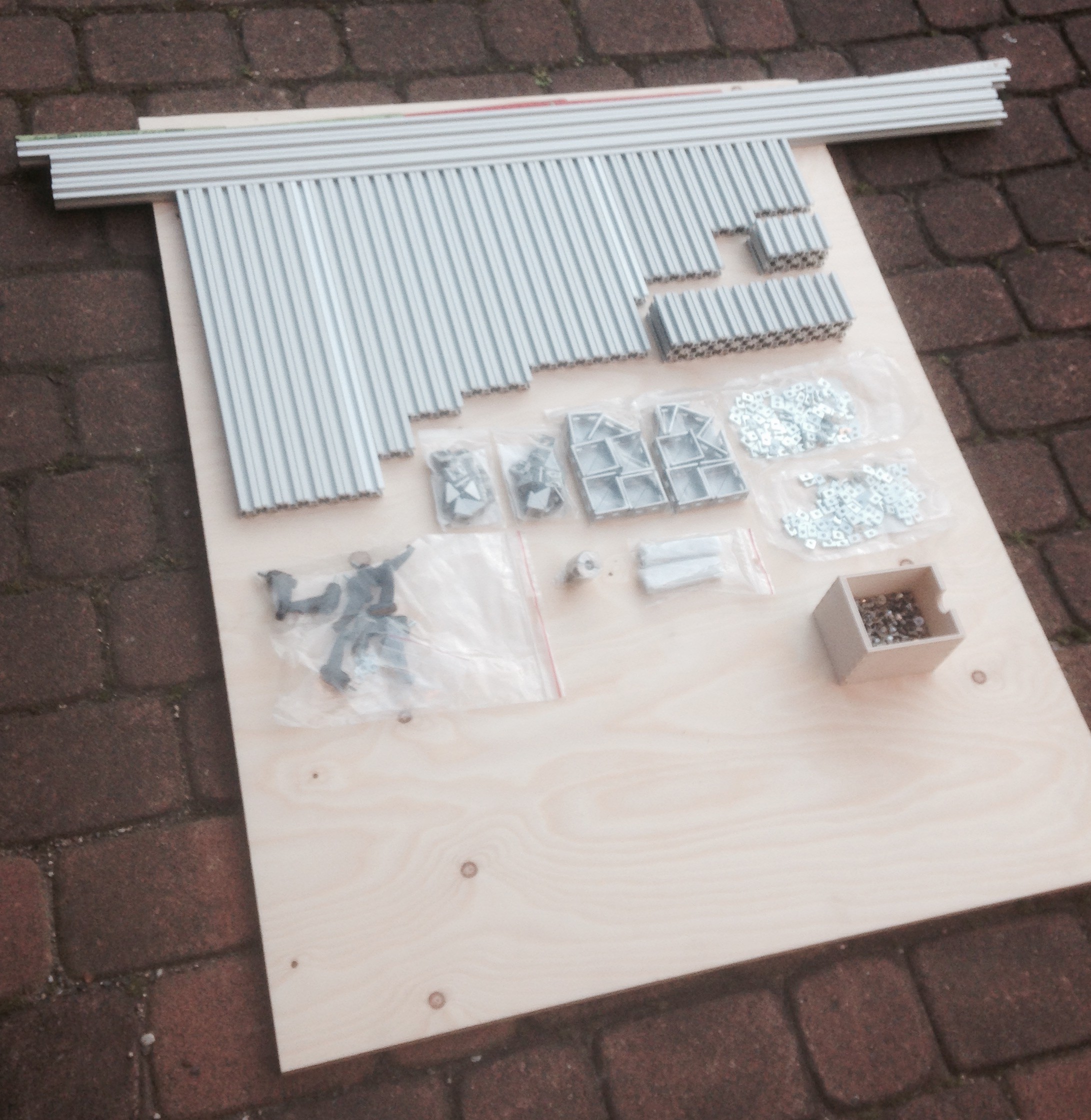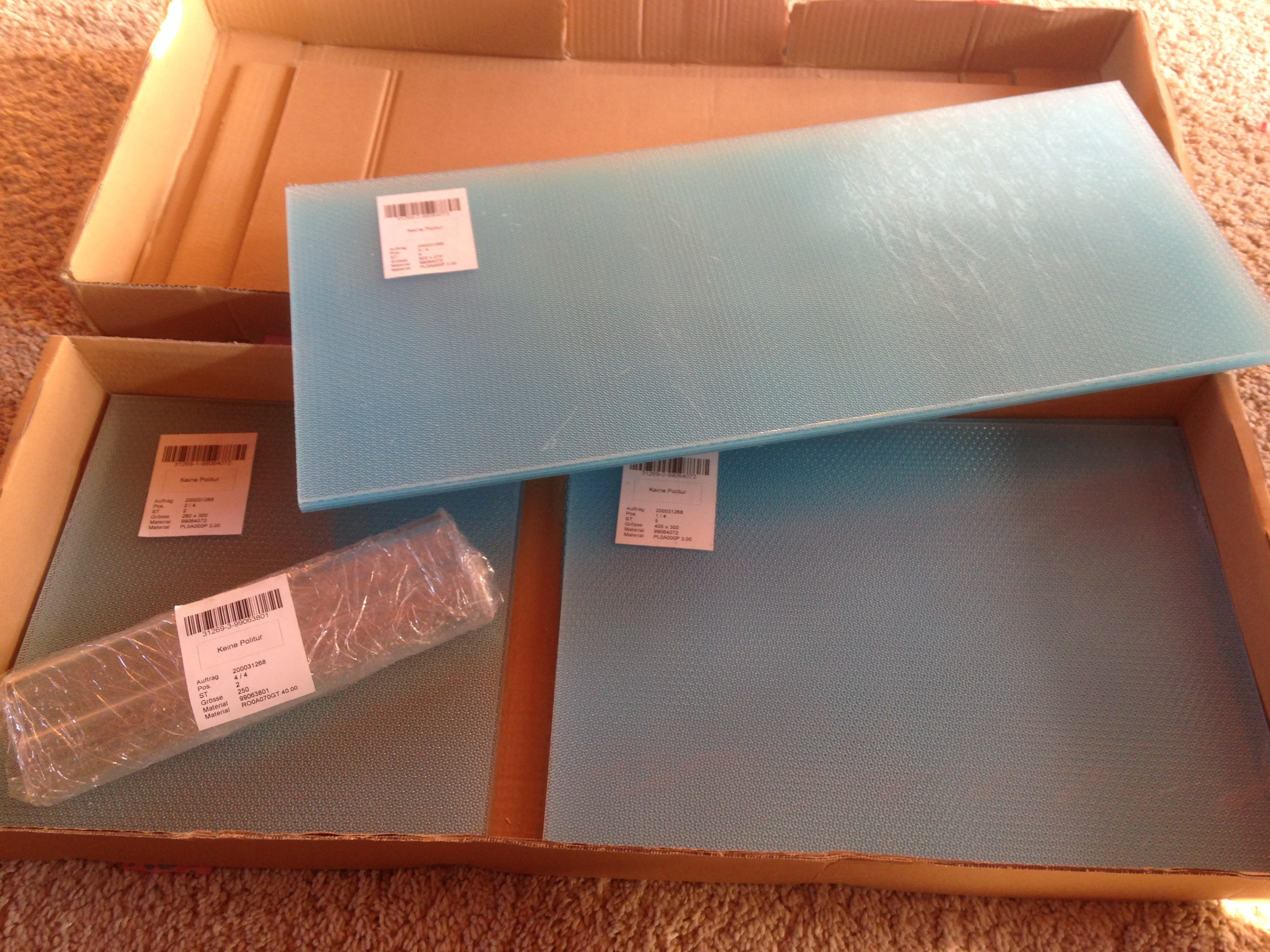-
7" HDMI Display
10/02/2016 at 19:35 • 0 commentsInstead of a bigger HDMI monitor or TV we tried an cheap (40 EUR) 7" HDMI display.
That worked out well and is absolutely sufficient to operate the BOOKSCANNER.
-
BOOKSCANNER as Assistive Technology for Blind People
10/02/2016 at 19:00 • 0 commentsThe original idea behind the project was to develop the BOOKSCANNER for universities to digitize theire libraries. When we first showed our design ideas and the page turning mechanism as a feasibility model we learned from visitors that there might be another field of use for the BOOKSCANNER.
BOOKSCANNER for blind people
Sometimes (older) books printed in braille letters don't exist (or are not available) as a normal (visible) printed copy or as digital version. By scanning the pages with our BOOKSCANNER it would be possible to 'read' the braille pattern by using OCR technology.
The content could be stored in a digital form and/or it could be read by a computer voice.
Another idea which came up in this context was, that a computer voice could read standard printed books to blind children (in an age where they didn't have started reading) by using the BOOKSCANNER and OCR.
-
What to research while building a BOOKSCANNER?
06/17/2016 at 21:27 • 0 commentsWhile designing and optimizing a machine like a bookscanner we tried to identify possible spots where problems can occur.
Two major operations are:
- the movement of the books on the acrylic sheets
- the turning of the pages with a stream of air
The friction between the paper and the acrylic sheet results in required torque/ power of the motor which drives the book slide. We decided for acrylic sheet because of the
- easy availability
- easy machinability as sawing, laser cutting, drilling, bending by heat
- durability
The material is available in different
- thicknesses
- colours
- GS (casted) or XT (extruded)
- surface textures
The parameter to influence the friction is the surface texture.
We got samples of different textures and made experiments with different kinds of paper from tissue to whatever BUTTERBROTPAPIER is in english :)
In this video you can see the experiments and the results:
The result of the experiments was that a pearl structured surface had a significant lower friction with all tested types of paper. This acrylic sheet is now build into the bookscanner and the results from the experiments could be replicated in the real application as well.
For the page turning we made experiments with different shapes of so called coanda effectors. This unit blows a stream of air tangential onto a tubular. The resulting low pressure zone causes the lowest page to separate from the others. Next to the overall shape of the coanda effector the positioning and the speed of the air are important variables - Some of the work can be seen here:
The process of just separating a single page is pretty reliable. Just in case if less or more than one pages is separated this requires a reaction of the bookscanner. It should be tried to repeat that page separation till exact one page is flipped. To detect the number of pages we found out that an infrared LED and detector gives very good results. One needs to teach zero, one and two pages into the machine and possible failures during the book scanning process will be detected.
The following video shows how the page detection works:
-
Anything goes in Ethiopia?
05/16/2016 at 10:42 • 0 commentsWhat's up in the education system in Ethiopia?
More that 100.000 students are entering the universities every year. The government takes care to employ professors from other countries to educate all this students.
But one thing is missing - BOOKS.
The libraries can not effort to buy enough textbooks for the students. The books cost the same as in Europe or in the USA (in Ethiopia the teaching language is english from the fifth year of school). As a result they try to make paper copies from the books. The disadvantages are that those copies don't last long and it is bring task to make them. Additional Ethiopia has to import every paper to produce the copies.
One could think of scanning the books.
One method is to rip of the cover to make scanning easier - not prefered!
Or you can scan them manually - after 50 pages you will get mad and make mistakes - not prefered!
You could buy an automatic bookscanner from the shelf - 50.000 $ - bit too expensive!
That is why we were asked if we could build a much cheaper automatic bookscanner.
We accepted the challenge and now we can present our AUTOMATIC BOOKSCANNER for just 500 EURO material cost!
ANYTHING GOES!!!
-
Deliveries for the 4th prototype coming in
05/02/2016 at 21:58 • 0 comments![]()
Motorcontroller Boards were delivered.
![]()
This are all aluminium profiles for one Scanner.
Plexiglas panels.
-
Production of Electronic test boards has begun
04/23/2016 at 16:23 • 0 commentsWe have designed a PCBA which will be pluged onto the Raspberry Pi. This board will help the Pi to controll the stepper motor and some of the sensor. The first three boards are ordered :)
-
Why did we drag the BOOKSCANNER into the Hackaday Prize?
04/15/2016 at 21:06 • 0 commentsMoney! Its about the money :)
Our plan is to organize a workshop in the Fab Lab of Addis Abeba, Ethiopia with people from different university libraries till end of this year.
The people who want to use those the BOOKSCANNER need to build them by themselves to assure that they can maintain, repair or even improve them.
To make that happen we need some money of course for the flights and shipping the required material and of course some material to play with.
As the project is financed only by donations and the membership fees of our small organization 'mäqädat - Bildung ohne Grenzen e.V.' some extra money from winning such a contest with so many impressive ideas and builds would be quite helpful.
And of course we would like to use this opportunity to tell you all about our idea to design an automatic BOOKSCANNER for Ethiopia.
In case we will win any money it is guaranteed that it will be used within the BOOKSCANNER project by 100 percent!
And now it is time to donate us a LIKE :)
-
Isn’t that ILLEGAL?
04/07/2016 at 20:58 • 0 commentsHell no. Of course we wanted to be sure about this. We have a certificate from the university of Mekele which states that digitizing text books for the purpose of education is legal in Ethiopia. In Germany it is also allowed to digitize or copy books from libraries and use them for the education.
-
What's the INNOVATION?
04/07/2016 at 20:50 • 0 commentsPage turning
The bookscanners we found commercially or as DIY projects used a number of different methods to turn the pages.
One had a so called bionic finger to turn the page as one would do it with a wet finger. Another machine lowers a glas prism into the open book and sucks the ajectand pages to the prism while it is pulled up and fotos are made. One lifted the page with vacuum and slided a stick under the lifted page to turn it. Danys linearbookscanner uses vacuum to suck one page onto a curved slotted surface to guide this page under an edge while the book is moving forward.
All these concepts are interesting and work within their boundaries. But some of them cannot be build easy or cheap enough.
Our page turning concept is based on the COANDA EFFECT. Air is blown tangential over a curved surface. The stream of air will follow the curvature. A page which is moved over this area is also following the deflected stream of air.
The big advantage is that pressured air is easy to generate und other than vacuum no pages can be damaged because they are hold to the vacuum slots to strong while the rest of the book is still moving.
Next we designed the frame from aluminium profiles which can be assembled easily. Also improvements can be done without scraping to much parts.
-
all REQUIREMENTS fullfilled?
04/07/2016 at 20:39 • 0 commentsThe requirements were: to design a BOOKSCANNER which
- turn pages automaticly
- can scan books up to DIN A4 size
- has low material cost (no exact number defined – we had less than 1000 Euro in mind)
- does not require special materials
- does not require special machines or equipment
- can be build and maintained in Ethiopia
Automatic bookscanners are already available on the market. Comercial bookscanners can easily cost more than 50.000 Euro. Also plans for DIY bookscanners are available but this 1000 USD machines require that the pages are turned manually by the operator.
Even the concept on which our bookscanner is based was build in about five versions. The original concept was invented by Dany Qumsiyeh in August 2013.
But those designs are based on sheet metal which we want to avoid because of the required equipment.
We decided to design our own bookscanner based on Danys concept.
We were able to fullfill all of our given requirements.
No. 1: The mäqädat BOCKSCANNER can scan the book automaticly.
No. 2: The limitation is the size of the scan sensor bar which is bigger as A4 format.
No. 3: The estimated material cost are 500 Euros.
No. 4: All materials can be ordered with short lead times. Some parts need to be 3D printed.
No. 5: The acrylic sheets can be cut with a laser cutter but they also can be manufactured with a saw.
No. 6: This is not prooved so far, but we discussed the design and chosen materials with people from Ethiopia. A major portion from the bill of materials is not manufactured in Ethiopia but also not in Germany or the US. Electronic components, motors or aluminium profiles are often manufactured in China and they can be imported to Ethiopia as well.
automatic BOOKSCANNER for Ethiopia
Design of a 500 Euro automatic BOOKSCANNER which can be build without expensive or complicated equipment or skills.
 Karsten Fuhst
Karsten Fuhst

